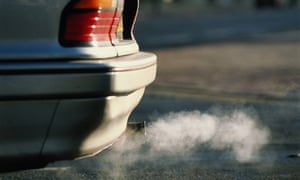Australians are being placed at risk by stalled government action on
two dangerous pollutants mainly emitted by coal-fired power stations,
environmental experts have warned.
Air pollution places a significant burden on the health of Australians, causing 3,000 deaths each year and a mortality cost of between $11bn and $24bn, according to the Australian Institute of Health and Welfare.
Legally binding safe levels for some of the more dangerous toxins were last set in 1998, and are now outdated.
A process to review air pollution standards for two toxins – sulphur dioxide (SO2) and oxides of nitrogen (NOx) – began two years ago. But Environmental Justice Australia has warned the process has become mired in delay. It said it had only just found out that consultations were starting.
The review involves nine governments, led by Victoria, and is now not expected to be finalised until 2020.
EJA lawyer Nicola Rivers has described the delay as “unacceptable”.
“National standards for air pollution are incredibly important,” Rivers told Guardian Australia. “They help the states and territories decide what air pollution levels should be. They flow through to polluters and how much they can pollute … and they protect the health of communities.”
The two pollutants are usually associated with the burning of coal at power stations and vehicle emissions, and have harmful impacts on human health.
Air pollution places a significant burden on the health of Australians, causing 3,000 deaths each year and a mortality cost of between $11bn and $24bn, according to the Australian Institute of Health and Welfare.
Legally binding safe levels for some of the more dangerous toxins were last set in 1998, and are now outdated.
A process to review air pollution standards for two toxins – sulphur dioxide (SO2) and oxides of nitrogen (NOx) – began two years ago. But Environmental Justice Australia has warned the process has become mired in delay. It said it had only just found out that consultations were starting.
The review involves nine governments, led by Victoria, and is now not expected to be finalised until 2020.
EJA lawyer Nicola Rivers has described the delay as “unacceptable”.
“National standards for air pollution are incredibly important,” Rivers told Guardian Australia. “They help the states and territories decide what air pollution levels should be. They flow through to polluters and how much they can pollute … and they protect the health of communities.”
The two pollutants are usually associated with the burning of coal at power stations and vehicle emissions, and have harmful impacts on human health.
They can cause inflammation of the respiratory tract, wheezing, and lung damage, and pose a particular risk to people with asthma. In severe cases they have been associated with developmental problems in children, and death.
The current standards for SO2 are well out of step with those recommended by global standards, allowing exposure at about 10 times the World Health Organisation’s recommended standards, according to the EJA.
EJA recently worked with the University of Melbourne’s lung health research centre to bring together leading experts on air pollution and respiratory health. Together, they determined a new set of standards in half a day.
“If we can do it in half a day, governments can do it in 2018,” the EJA said in a statement. “The process for setting national standards is failing Australian communities. Australians are being exposed to unacceptable levels of pollutants causing death and disease while governments go through their bureaucratic nightmare processes.”
The health impact of coal-fired power plants is significant. In 2009, the Australian Academy of Technological Sciences and Engineering report estimated the health cost of coal-fired power stations was about $13 per MWh of electricity generated.
That equated to about $2.6bn a year, according to the report.
“The good thing about air pollution is that you bring down the level, you get immediate health benefits,” Rivers said. “There are less hospital admissions for asthma, you get people feeling better straight away.”
The regulation of air pollution in Australia is managed by each state and territory, through their own laws and policies. Those laws and policies are informed by the national air pollution standards, which are supposed to be legally binding.
A 2015 study found the regulation of air pollution was “complex and confusing” and led to a “highly unequal distribution of air pollution between towns and cities, and across the country”.
Rivers said the system for reviewing air pollution standards needed change, to reduce delay.
“We want this process to be fast-tracked and rapidly come to a conclusion so we get better standards,” Rivers said. “We also recognise that that process that we’re using to set these standards is no longer working”.

No comments:
Post a Comment